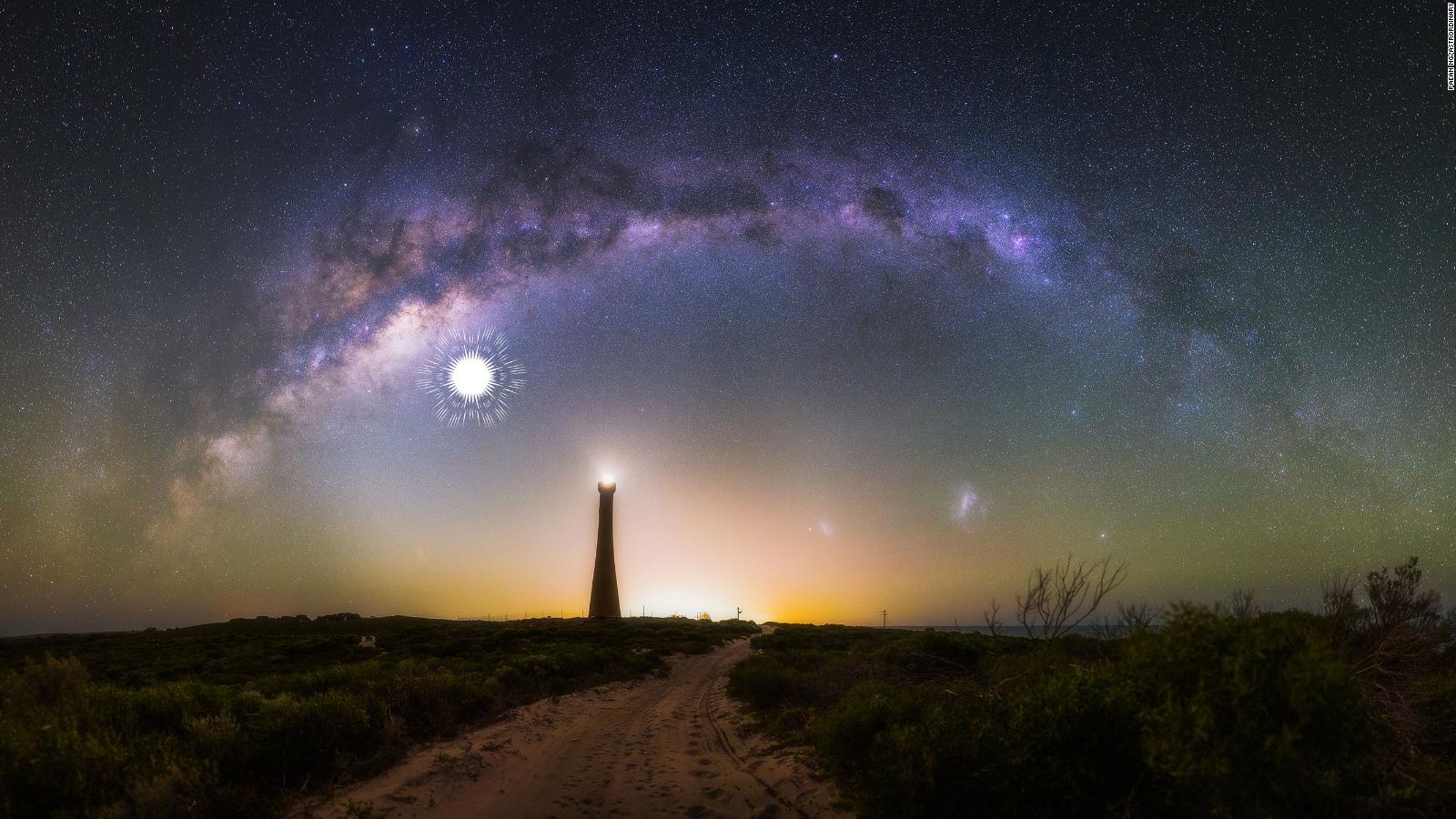The composite image shows our galaxy's central zone, which has the largest and densest collection of giant molecular clouds in the galaxy. These clouds are huge and cool in temperature, with enough dense gas and dust to create tens of millions of stars like the sun, according to NASA.
At the center of the image is the easily discernible candy cane shaped feature. It spans 190 light-years and is one of a set of long, thin strands of ionized gas called filaments that emit radio waves, NASA said in a news release.
Flares of red, yellow and turquoise, arcs of blue and green, and faint spots of light appear in the image, which was captured by NASA's Goddard-IRAM Superconducting 2-Millimeter Observer (GISMO) camera, along with a 30-meter radio telescope.
"We're very intrigued by the beauty of this image; it's exotic," said Johannes Staguhn of Johns Hopkins University, who led a paper describing the image, published in the Astrophysical Journal. "When you look at it, you feel like you're looking at some really special forces of nature in the universe."
Our solar system is a small part of the Milky Way galaxy, a collection of stars, gas and dust bound together by gravity and named for its appearance from Earth as a milky band of light in the sky, according to NASA.
"There's a good chance that a significant part of star formation that occurred during the universe's infancy is obscured and can't be detected by tools we've been using, and GISMO will be able to help detect what was previously unobservable," said Staguhn in a press release.
The colorful image also identified several key features -- like landmarks on a terrestrial map. There's one feature called the Sickle, which is associated with star formation. There's Sagittarius A, an extremely bright red-yellow region about 27,000 light years away from us. And there's the Radio Arc, a bright red curve that cuts through the Sickle, and forms the "straight part of the cosmic candy cane."
The location and shapes of the filaments also offer clues about our galaxy's history -- some filaments formed at the edges of a "bubble" that was blown by "some powerful event at the galaxy's center," located within Sagittarius A, which also hosts the Milky Way's supermassive black hole.
According to a separate study published Monday, a giant burst of star formation caused more than 100,000 supernova explosions in this central zone of the Milky Way during its early years.
Previously, astronomers believed that star formation was continuous in the central region over the course of the galaxy's history. But new data revealed that at the very beginning of the galaxy, 80% of its stars were formed in the central region.
"This burst of activity, which must have resulted in the explosion of more than a 100,000 supernovae, was probably one of the most energetic events in the whole history of the Milky Way." said Francisco Nogueras-Lara, that study's author.
https://www.cnn.com/2019/12/19/world/milky-way-candy-cane-intl-hnk-scli-scn/index.html
2019-12-19 07:56:00Z
CAIiEFqgcxOhseJAg77Q8PSOyygqGQgEKhAIACoHCAowocv1CjCSptoCMPrTpgU
Bagikan Berita Ini

















0 Response to "A 'cosmic candy cane' at the center of the Milky Way could hold clues to star formation, NASA says - CNN"
Post a Comment